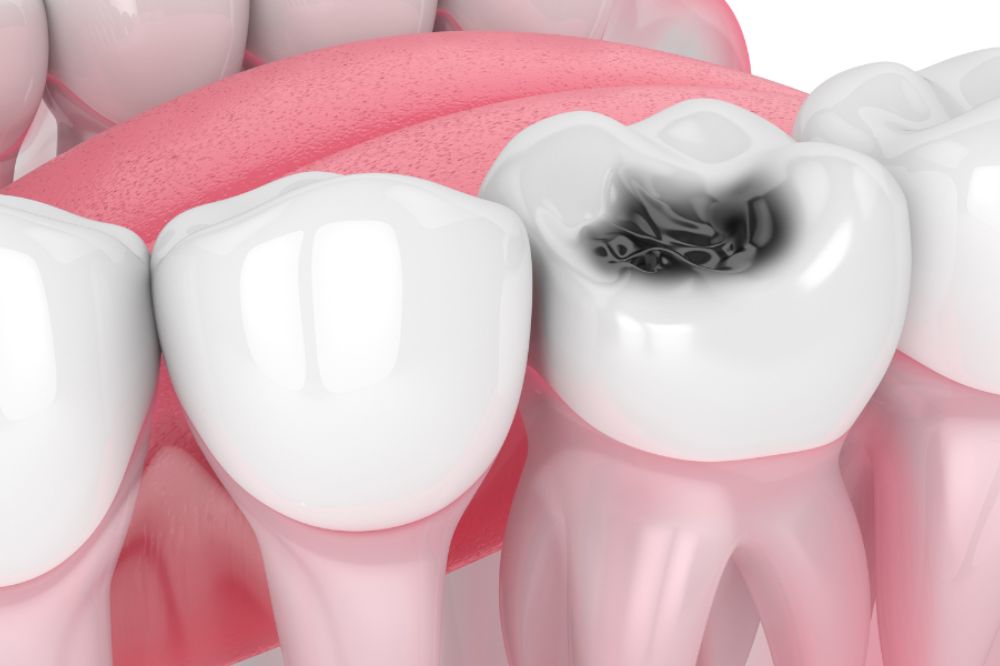Have you ever wondered what makes a cavity different from tooth decay? These terms are often used when discussing dental health, but they are actually different. Let’s dive into this topic and clear up the confusion in simple, easy-to-understand language. Let’s begin by addressing any misunderstandings and clarifying the meaning of each dental term and the differences between them. Having a clear understanding will help you know to visit a dentist near you for immediate dental care.
What is Tooth Decay?
Tooth decay is a process that happens to our teeth over time. It’s like when something slowly gets damaged or worn out. Imagine you leave a piece of bread outside for days. Eventually, it will get moldy and spoiled. Tooth decay is similar, but it happens to your teeth and it’s caused by bacteria.
What causes tooth decay:
- Bacteria in Your Mouth: Your mouth is home to many bacteria. Some of these bacteria are harmful, especially the ones that love sugar.
- Sugar and Acid: When you eat sugary foods or drinks, the bacteria eat the sugar and produce acid as a waste product.
- Attack on Enamel: This acid attacks the enamel, which is the hard outer layer of your teeth. Think of enamel as a shield protecting your teeth.
- Loss of Minerals: As the acid continues to attack, the enamel loses minerals, leading to weakened spots.
This whole process of the enamel getting weakened by acid is called tooth decay.
What is a Cavity?
A cavity is what happens when tooth decay goes too far. It’s the actual hole or damaged area that forms in the tooth. If you don’t stop tooth decay early, it will create a cavity, which can be painful and require a dentist in Naples to fix it.
Here’s how a cavity forms:
- Weakened Enamel: If the tooth decay continues, the enamel gets weaker and weaker.
- Hole Formation: Eventually, the enamel breaks down enough that a small hole, or cavity, forms.
- Deeper Damage: If the cavity isn’t treated, the decay can go deeper into the tooth, reaching the softer layer called dentin and even the inner part called the pulp.
Differences Between Tooth Decay and Cavities
To make it simple:
- Tooth Decay: This is the process that damages your teeth over time due to bacteria and acid.
- Cavity: This is the result of tooth decay—the actual hole or damage that forms in your tooth.
How Can You Tell If You Have Tooth Decay or a Cavity?
Sometimes, it’s hard to know if you have tooth decay or a cavity because the signs can be subtle. Here are a few signs to look out for:
- Tooth Sensitivity: If you feel pain or discomfort when eating hot, cold, or sweet foods, it might be a sign of tooth decay.
- Toothache: Persistent pain in your tooth could mean you have a cavity.
- Visible Holes: Sometimes, you can actually see a small hole or dark spot on your tooth.
- Bad Breath: Constant bad breath might indicate that bacteria are causing decay in your mouth.
Preventing Tooth Decay and Cavities
You can do a lot to prevent tooth decay and cavities. Here’s tips how:
- Brush Your Teeth: Brush at least twice a day with fluoride toothpaste. Fluoride helps strengthen your enamel.
- Floss Daily: Flossing gets rid of food bits and plaque from between your teeth, where your toothbrush can’t reach.
- Eat Healthy: Limit sugary snacks and drinks. Choose fruits, vegetables, and dairy products that are good for your teeth.
- Visit the Dentist: Regular check-ups help catch problems early. Your dentist near you can clean your teeth and check for signs of decay.
- Drink Water: Water helps wash away food particles and bacteria.
What Happens at the Dentist?
If you do get a cavity, don’t worry! Dentists are here to help. Here’s what happens:
- Examination: The dentist will look at your teeth and may take X-rays to see the extent of the decay.
- Cleaning: If it’s just early tooth decay, a professional cleaning might be enough to stop it.
- Filling: If you have a cavity, the dentist will remove the decayed part of the tooth and fill the hole with a special material. This filling restores the tooth and stops the decay from spreading.
- Sealants: For extra protection, your dentist might put sealants on your back teeth. Sealants are thin coatings that protect your teeth from decay.
Restore Your Smile With Quality Dental Care Today!
Tooth decay and cavities are common dental problems, but they are preventable with good habits. By taking care of your teeth through brushing, flossing, eating healthy, and visiting the dentist, you can keep your smile bright and healthy.
At Naples Dental Arts Center, we are here to help you. We offer a range of comprehensive dental care, including dental exams and checkups. If you are looking for a dental clinic in Naples and believe you might have tooth decay or a cavity, contact us to schedule an appointment right away. Our expert team of dentists will guide you through the next steps and essential treatment to restore your tooth’s functionality and aesthetics.

